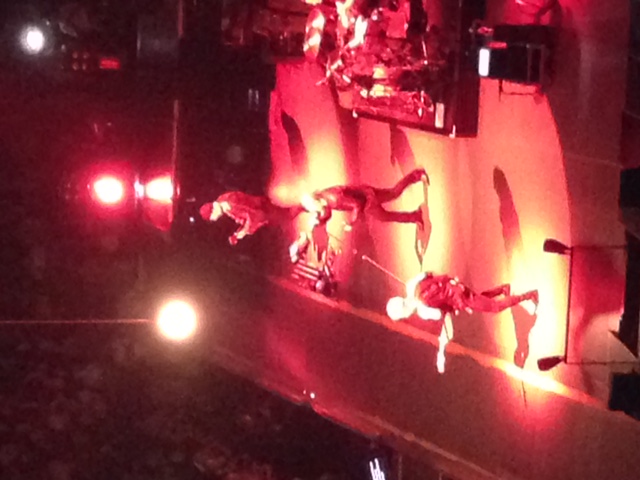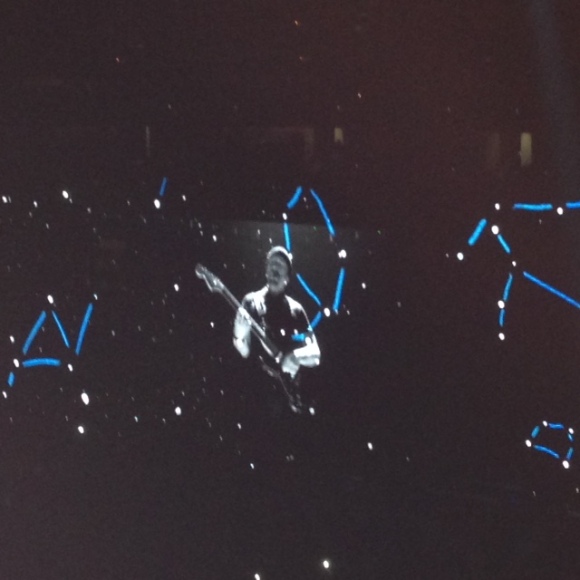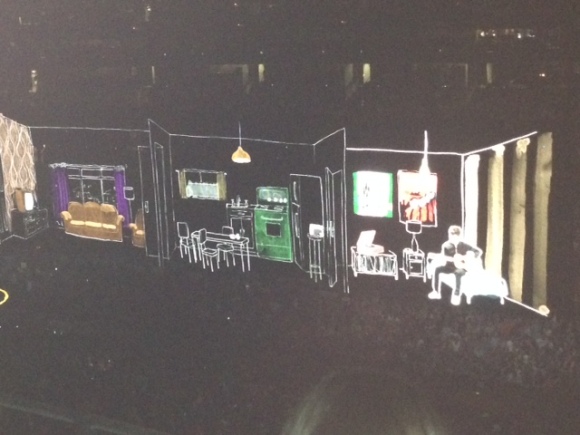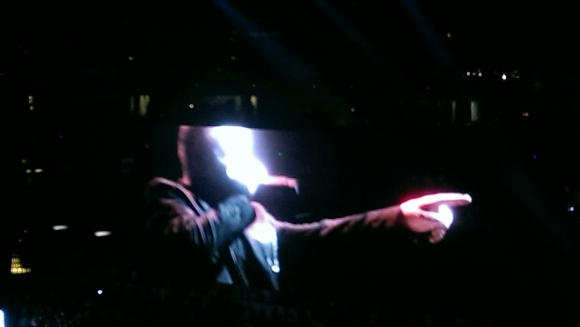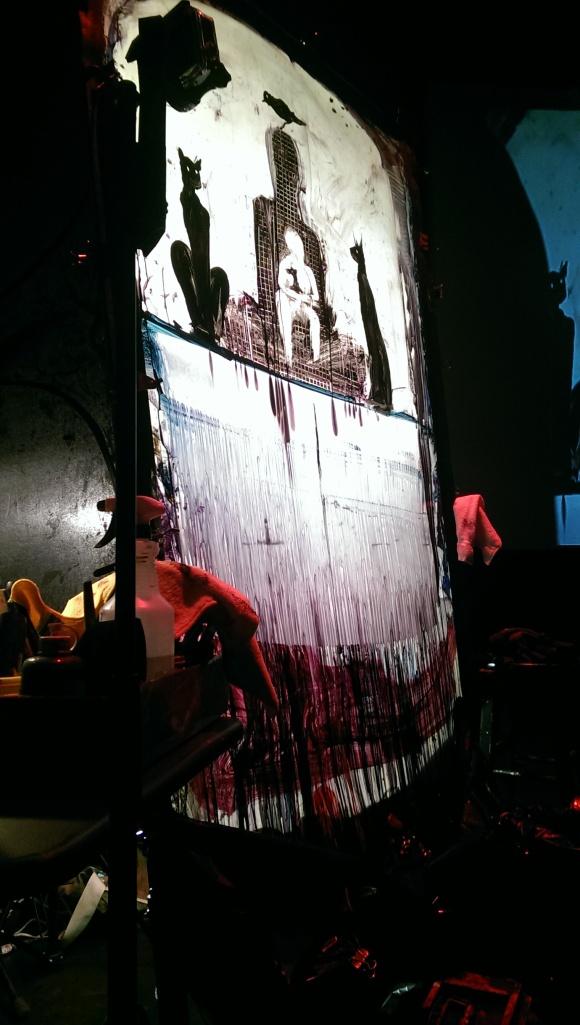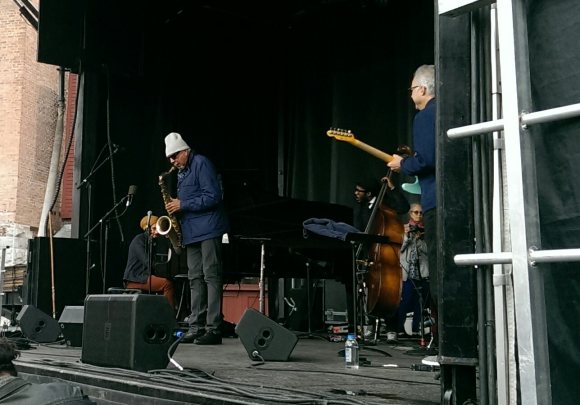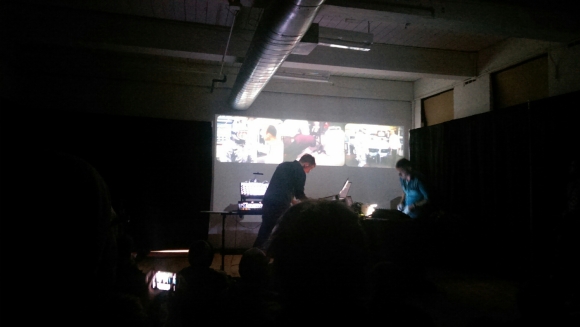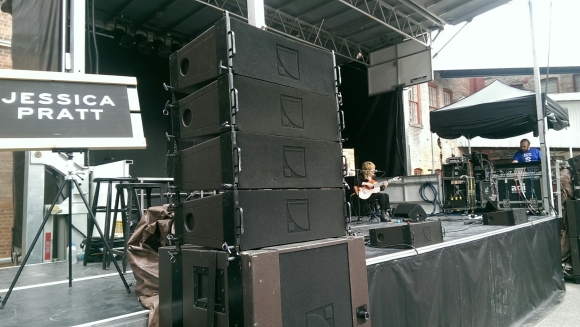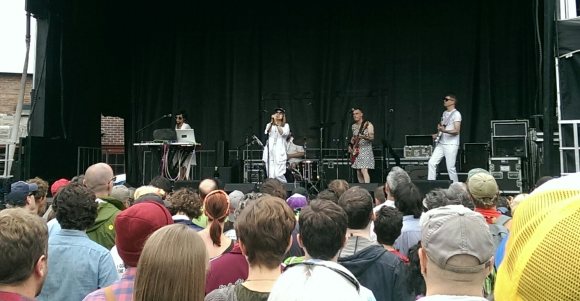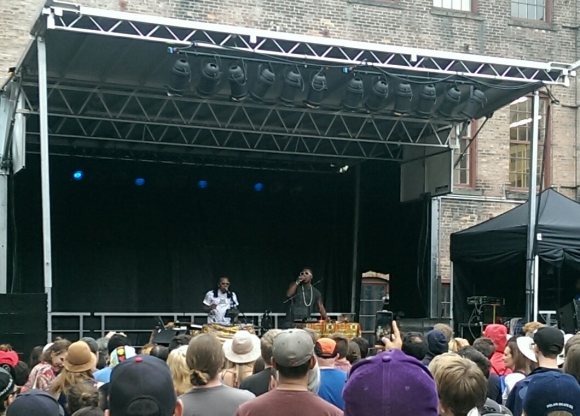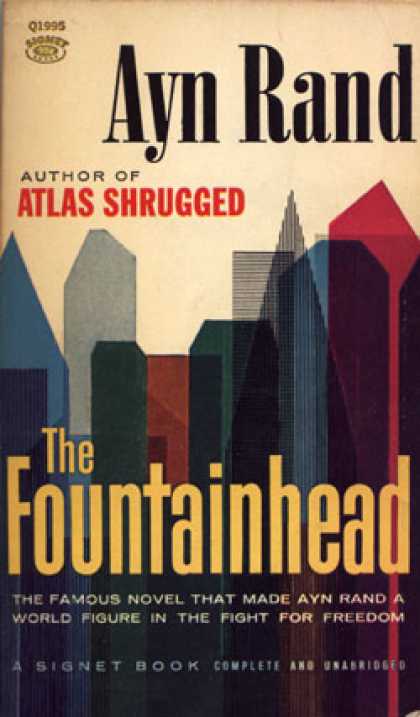Stories of musical pop culture icons are being adapted for the screen with increasing frequency in recent years. Most fail in one way or another, but Straight Outta Compton is one that’s definitely worth checking out if you’re interested in the story of one of hip-hop’s most controversial and influential groups. SoC tells the story of the rise of seminal gangsta rap group NWA as well as the ascent of Ice Cube and Dr. Dre as solo artists. Thematically, the film covers a lot of ground. It’s a story of music industry glory, but it’s another vivid reminder of the difficulty in maintaining integrity within the band when the money starts rolling. More broadly, it confronts us with the challenges of urban black families faced with the prevalence of inner city crime and gang culture. SoC is also an important film for this political moment since free speech and police brutality are themes that are deeply embedded into the fabric of the story.
The film opens with a drug deal between Eazy-E (aka Eric Wright) and some random gang bangers which escalates very quickly. Right away, the film is taking us into the Compton underworld of the mid-80’s. Everyone is packing heat, drug dealing is one of the few engines of economic mobility that’s easily attainable, every negotiation carries an implicit death threat, and “bitch” and “nigga” are freely deployed throughout normal conversation. It wasn’t called gangsta rap for nothing. The deal devolves into threats, but everyone scrambles for safety when the armored military-style battering ram vehicle rounds the corner, plows right through the front door and cops swarm the house. Welcome to Compton, bitches.
When we’re introduced to a young Dr. Dre (aka Andre Young), his Roy Ayers induced blissed out reverie is violently interrupted by his irate single mother. She castigates him for failing to attend a job interview while simultaneously reminding him how hard she worked to keep a roof over their heads and food on the table. Dre isn’t having a word of it, and packs his bags so he can pursue his music career free of persistent maternal nagging. The film is giving us a sense of the burden black single mothers carry imparting the importance of developing personal responsibility and meaningful job skills in the absence of strong, paternal role models.
We meet a young Ice Cube (aka O’Shea Jackson) penning rhymes as he stares out the school bus window. Middle-class white teenagers idle away to pop music in fancy cars and clothes while he awaits being shipped back to the dreary impoverishment of Compton. The bus ride home is interrupted by armed gangsters whose sole intention is to intimidate the kids who taunted them during the route. Once again, we’re reminded that gangsters were a common phenomenon in South Central LA, and the thug life offered a sense of purpose, belonging and upward mobility for young blacks who faced a seemingly hopeless existence short on positive parental figures or examples.
Upon his arrival home, he is treated to the prodigious turntable skills of Dre who had recently taken up residence on his couch. With the knockout combination of Dre’s instincts for production and Cube’s pugilistic street poetry, the two friends set their sights on carving out a new sound in rap that reflected the gritty reality of life in Compton. The bonds of friendship which created a new hip-hop dynasty were sealed.
One of the great strengths of the film is the absence of phony PC propriety and artificial attempts at racial correctness. The unvarnished portrait of urban black speech and gender relations all by itself is a glorious kick in the teeth to social justice warriors who are constantly bitching about “harmful representations in the media of Marginalized Group (fill in the blank)”. Admittedly, the portraits are not the most flattering towards this particular segment of the African-American population, but when contrasted with the modern Hollywood PC orthodoxy which mandates that blacks always be portrayed in a positive light, this film feels like it’s making an above average attempt at honesty instead of trying to pander to phony leftist piety. In an early scene where Dre and Cube are given a slot to perform at a popular nightclub, the owner sternly reminds the young MCs that he wants the people focused on “pussy, not pistols”. They ignore his admonitions and perform the track to overwhelming enthusiasm. The track contained many of the lyrical themes which became commonplace within the gangsta rap genre: gritty, profanity laced realism defined by unrepentant portraits of guns, criminal activity, and raunchy sex.
In many ways, the film is the story of Eazy- E’s role in creating NWA’s success. Emboldened by the positive reception to their track, Dre and Cube convince Eazy-E to bankroll their first recorded effort. When the crew they hire unceremoniously quit, Dre persuades E to sing the lead vocal. Here, the film gives an interesting insight into Dre’s gift for producing as well as E’s unsteady flow at this early stage in their career. The result of this effort was “Boyz In Da Hood” and this initial success laid the groundwork for NWA.
A big theme in the film is the challenge of maintaining integrity, professionalism and independence in the music industry. Especially when the money, drugs and women are readily accessible and the behavior and habits they acquired in the streets of Compton informed their business interactions as adults. The two dubious business partnerships between Eazy-E, Jerry Heller, Suge Knight and Dre drove a lot of the interpersonal drama between the characters. Heller discovers E when “Boyz In Da Hood” was climbing the charts and helped steer the Ruthless crew to global success, but the absence of transparency in the contracts eventually drives a wedge between the friends. It’s insinuated that Heller took advantage of NWA, but it’s not entirely clear that he was completely unscrupulous, either. Not only does Heller exhibit courage and loyalty throughout NWA’s ascent, but he talks E down from exacting vengeance on Suge Knight after a business meeting turns violent. Suge Knight, on the other hand, is portrayed as a sociopathic thug with few scruples, a hot temper and a propensity towards arbitrary violence. Clearly, the relationship between him and Dre wasn’t completely fruitless since Dre’s career went stratospheric during the Death Row era, but it brought with it a great deal of dysfunction and more than a few hangers on.
The relationship towards law enforcement plays prominently throughout the film and gives it an urgency that speaks directly to currently escalating tensions between police and the black community. The film portrays the incident which inspired “Fuck Tha Police”, and not only is it an example of the indignities to which inner city blacks are routinely subjected, it brings the vitriol of the song to life even more vividly. While recording Straight Outta Compton in upscale Torrance, California, the members of NWA were minding their own business outside the studio when cops descended on the scene and demanded that each of the members drop face down on to the sidewalk. Heller arrives shortly thereafter, demands that they be released and chastises the officers for assuming criminal intent based on their appearance. Heller instructs the band members to rise, but the cops refuse to allow them rise until they give the instruction. They forced the men to eat concrete and their dignity for several minutes before issuing a command to stand up. Heller indignantly reminds the cops they’re rap artists, but the black police chief responds with a disparaging and contemptuous retort that “rap isn’t art” and tells them never to be seen in Torrance again.
NWA get their sweet revenge when the song explodes in popularity, but it draws the attention of the FBI while they’re on their first tour. Prior to their now infamous concert in Detroit, the police threaten to arrest NWA if they perform “Fuck Tha Police” during the show. Heller is rattled and advises that they abstain from performing the song to avoid any entanglements with the federal government, but NWA aren’t willing to back down on free speech grounds. In one of the film’s finest scenes, the band members pause after finishing a song and give one another a knowing look. The crowd is roaring with applause while Cube tells the audience about how they were threatened and the cops stationed throughout the venue grimace in anticipation of their defiance. They milk the drama of the moment just right, and when Cube instructs the crowd to hoist their middle fingers aloft and finally cues the song with, “Yo, Dre. I got something to say”, it’s positively explosive. The crowd goes mental, but shots are fired and mayhem ensues ending in the apprehension of the members of the group.
When it comes to the message of NWA and the success of the gangsta rap phenomenon, I’m divided. As a full throated advocate for free speech and free markets, I believe that NWA were fully within their rights to write and rap about whatever they damn well pleased and that the government had no business attempting to censor or silence them. On the other hand, I’m sympathetic to cultural and religious conservatives (and even secular progressives) who find the lyrics distasteful and don’t want their children exposed to that lifestyle. I can appreciate that a parent who is attempting to impart an appreciation for monogamy, education, conventional employment and a respect for the law might feel a bit of frustration towards the success of gangsta rap. I’m also sympathetic to black community leaders and parents who also may be galled by their success because their lifestyles and message run counter to their efforts to turn their own communities around. Regardless, NWA’s message burns with intensity and relevance mostly because they were the first and arguably the best at this particular style of hip-hop. Like every innovator, scores of imitators have sprung up in their wake, but they’ll never match the originality of the pioneers themselves.
Straight Outta Compton is ultimately a story of five African-American men who achieved success by simply raising their voices and never backing down. But like many other stories of its kind, the success came with a price. Eazy-E’s fall from relevance, financial woes and his untimely death from AIDS was just one of the consequences of a man who was arguably ill prepared to deal with either the temptations all around him or the responsibility he took upon himself. Though neither story was a focus of the film, the death of Tupac Shakur and the imprisonment of Suge Knight also serve as a reminder that the gangster lifestyle eventually catches up with you. Both Dr. Dre and Ice Cube may have had the talent and maturity to both persevere and thrive, but neither of them was without flaw in their interpersonal or business dealings. There are articles complaining about the ways the film glossed over some of the ugly and inconvenient truths, but I doubt there’s a biopic out there that gets everything completely right. The film makes it sufficiently clear that none of these men were saints. If you are someone who feels strongly that the omission of certain facts supersedes and delegitimizes the broader story the film is telling, then you should probably skip the film.
The filmmakers clearly wanted to connect the message and story of NWA to the current tensions over race and police brutality. The Rodney King beating and and the riots which erupted in the wake of the trial verdict were weaved into the film as a vivid reminder that the Ferguson and Baltimore incidents are not new. While many will likely shoehorn the narrative of the film into the now omnipresent and shopworn narrative of intractable, systemic racism embedded in the American psyche and institutions, the film very subtly reveals the true origins of these problems for anyone who’s actually paying attention. Like many other urban black neighborhoods, crime rates in Compton outpace the national averages. Single motherhood rates are disproportionate to other ethnic populations. Taken together, you’re going to have a community which naturally requires more aggressive policing. The police are certainly not above reproach or criticism, but the persistent effort to paint every instance of police brutality and harassment as evidence of “systemic racism” serves no one.
The performances from all the young leads are first rate and the soundtrack is filled with nuggets of classic funk, R&B, 80’s pop and hip-hop. This is a film that captures the voices of rage, defiance and alienation which changed the course of hip-hop and reverberate to this day. Like NWA themselves, the film is brash and unapologetic. Highly recommended.




